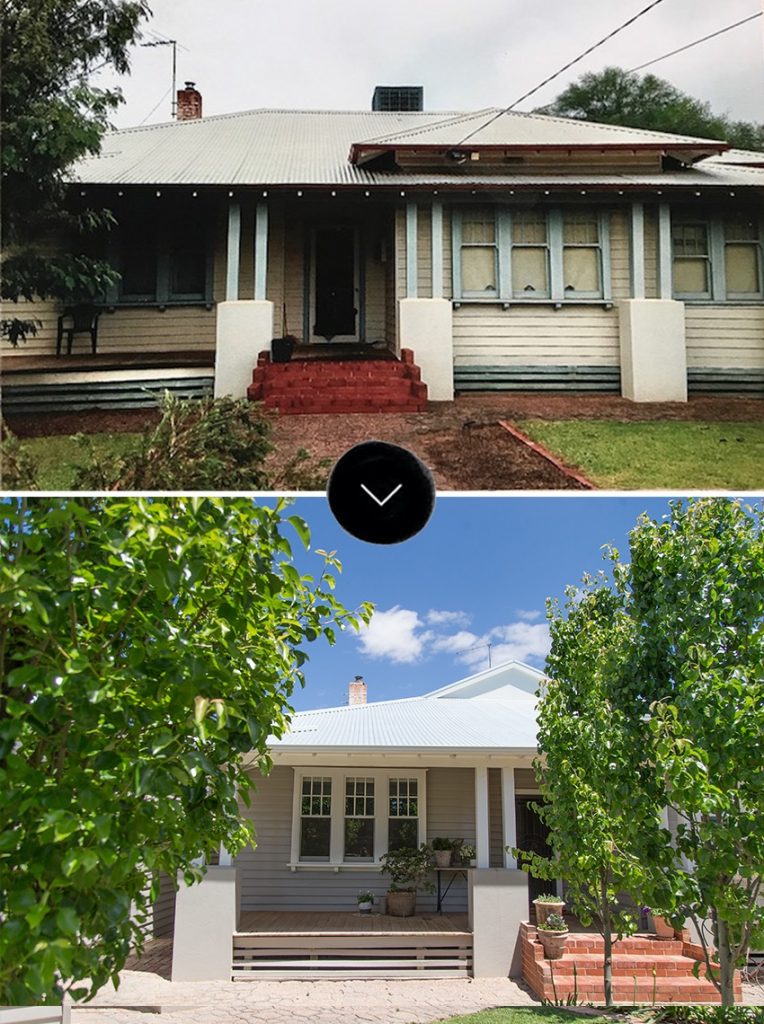Painting a house might sound like a simple task, but if you don’t have the right knowledge or skills under your belt, you’ll find out soon enough that it’s not as easy as it seems. Figuring out the best and most efficient way to paint a house requires some know-how and experience. From the type of paint you use to the prep work you need to do, there are lots of considerations to think about when it comes to painting a house. Continue reading to learn more about the things you need to know about painting your home.
How much does it cost to paint a house’s interior and exterior walls?
Painting is a low-cost but super effective way to change up your home’s entire look. However, as with all goods and services, painting tools and painters cost money. Generally speaking, the cost to paint a house in Australia will vary depending on whether it is the interior getting painted or the exterior. Exterior painting is usually more expensive, while interior painting is less expensive. For exterior painting, it can cost anywhere from a couple of grand to tens of thousands of dollars. Interior painting, on the other hand, usually doesn’t exceed $10,000.
The costs involved in painting a house’s interior and exterior walls will also be dependent on the size, condition, and material of the home. Obviously, a really large house with high ceilings and fragile materials will cost more than a smaller house with standard walls.

Set up yourself for success: How to prep like a Pro
If you don’t do your prep work, you’re asking for trouble. Painting walls isn’t as simple as dipping your brush in the paint tin and getting on with the job; there are some essential preparation tasks that you’ll absolutely need to do before you can even think about getting started with the painting element of the project. One of the most important tasks is to prime your house before painting.
This begs the question: how exactly do you prep a room for painting? The first step is to give the surface a good scrub. This is essential not only because it’ll prevent dust and dirt from showing up in the final product, but also because it actually helps the paint stick to the surface better. For exterior walls and surfaces, you could even consider getting these surfaces pressure cleaned beforehand.
After your walls have been cleaned, you’ll still need to scrape and sand your walls before you can start painting (make sure you wear your safety goggles and face mask for this step). You can begin by using a paint scraper to scrape off any flakes of paint from the surface, before moving onto sanding the walls down with sandpaper to create a smooth surface. Once you’ve finished with all these steps, you’ll be left with clean, smooth, and even surfaces. The final step is to simply add a layer of primer paint to your walls.
The best paint to paint a house
Understanding the difference between varying types of paint is key to a successful home painting project. The most common types of paints are oil-based paints and water-based paints. Oil-based paints are extremely durable, which is why they’re often used for outdoor surfaces. The downside of this type of paint is that it takes longer to dry, sometimes taking up to 24 hours before you can apply a new coat.
Water-based paint, on the other hand, dries very quickly. This means that you’re able to paint multiple coats in one day. They’re far less durable than oil-based paints, but for areas that don’t receive a lot of wear and tear, durability isn’t usually an issue. For this reason, water-based paint is often used for interior painting projects.
Once you’ve decided on the type of paint you’ll use, you’ll also have to think about the finishes you’re after. Do you want a matte finish or a gloss finish? Do you want an eggshell finish or a satin finish? There are lots of things to consider, so don’t hesitate to contact your local painting expert if you’d like some extra guidance. Remember, the best type of paint to use will vary depending on your unique goals and the type of project in question, so it’s always a good idea to get some professional advice before you dive in.
Spray Painting vs. Brush Painting: Which is best?
Is spray painting a house better than brush painting? This is a decision for every painting job. The brush and roller technique is still the preferred method for many painters. It’s the tried and true method that delivers consistent results and an even finish. Spray painting, on the other hand, can be advantageous because it can be very quick and efficient. While brush painting requires multiple coats and drying time, spray painting gets the job done comparatively quicker, making it a good option for those who want the job done in less time.
The downside of spray painting is that you really have to know what you’re doing for it to work. If you’re not well-practiced, you’ll likely be left with a mess and a patchy wall. For exterior walls and larger surfaces that don’t require perfect finishes, this might not be such a huge problem. Nonetheless, it might still be worthwhile to get it done by a professional, who will be able to get the job done quickly without compromising on quality.
How often should a house be painted?
Repainting your home’s interior walls is a matter of personal preference. You might be finding some cracks and flakes in the walls that need repairing, or you might just want a refresh or a redesign. Your home’s exterior, on the other hand, is another story. Paint on a home’s exterior surfaces serves a protective function, guarding the home from moisture damage, sun damage, and infestation. If you’re noticing cracks, fades, and chalking on your exterior walls, you should definitely consider calling up your local painting professional to come evaluate.
How often a house needs to be repainted depends on the quality of the paint job. For shoddily done paint jobs, you might need a repaint within a year. For well-done paint jobs, it’ll more likely be every 5-10 years. This also depends on a few other factors like climate, sun exposure, and the surface’s material.
About the author : This story first appeared in Jim’s Your Local Expert










